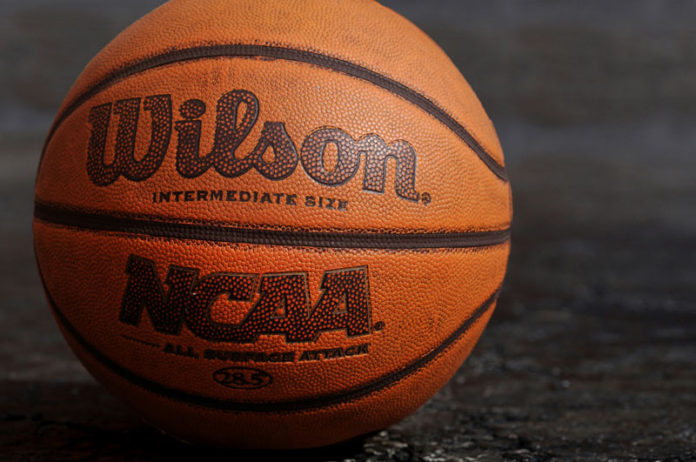
Published in cooperation between Celtic Media and the Los Gatan
March Madness is more than just a NCAA Basketball Tournament—it’s a nationwide phenomenon that has captivated fans for decades. The NCAA Tournament has evolved into one of the most anticipated sporting events in the U.S., drawing millions of viewers, engaging casual fans and fueling betting interest. Its unique bracket-style format, thrilling upsets and unforgettable buzzer-beaters have made it a cultural spectacle.
The rise of media, including television, social media and online platforms, has only amplified its impact, making March Madness an event that transcends sports and unites people from all walks of life.
The Origins of March Madness and Its Growth into a National Phenomenon
The NCAA Tournament began in 1939 with just eight teams. Organized by the National Association of Basketball Coaches, the event was initially overshadowed by the National Invitation Tournament (NIT), which was considered the premier NCAA Basketball postseason competition at the time. However, as the NCAA Tournament expanded, its format and level of competition quickly gained traction, surpassing the NIT in significance.
The inaugural NCAA Tournament was held in 1939, with Oregon emerging as the first champion after defeating Ohio State 46-33. By 1951, the field expanded to 16 teams, and just two years later, in 1953, it grew to 22. The tournament continued to expand as its popularity increased, reaching 32 teams in 1975, 48 teams in 1980 and eventually the now-iconic 64-team bracket in 1985.
The decision to move to a 64-team field in 1985 was a game-changer. It allowed for a perfectly balanced bracket, making the tournament more accessible to fans who wanted to fill out their own predictions. The additional teams also meant more games and more opportunities for Cinderella stories, which added to the drama and appeal of the event.
The Rise of the Bracket Craze and Office Pools
One of the most defining elements of March Madness is the bracket culture. The structured tournament format made it easy for fans to predict winners, leading to the explosion of office pools and online contests.
The bracket format encouraged friendly competition among friends, coworkers and families, making March Madness an event that extends far beyond basketball enthusiasts. Today, millions of people participate in bracket challenges, from casual fans to experts analyzing every statistic.
With the advent of the internet, bracket participation skyrocketed. ESPN’s Tournament Challenge, Yahoo Sports and CBS Sports offer free bracket contests, with ESPN’s challenge alone attracting over 17 million entries annually. Companies and websites also began offering massive cash prizes for perfect brackets, though the statistical odds of achieving one are roughly 1 in 9.2 quintillion.
The Role of Media in March Madness’ Explosion
Television broadcasts, social media and digital platforms have played a massive role in making the NCAA Tournament a cultural event.
For years, fans could only watch select tournament games, with early rounds receiving little coverage. That changed in 1982 when CBS acquired the exclusive rights to the tournament, leading to extensive nationwide broadcasts. In 2011, CBS and Turner Sports struck a $10.8 billion deal to air every game live across CBS, TBS, TNT and truTV.
Social media platforms such as X, Instagram and TikTok have taken March Madness to another level, making every buzzer-beater and Cinderella run instantly shareable. Hashtags like #MarchMadness and #BracketBusted trend annually, amplifying engagement and bringing casual fans into the excitement.
Cinderella Stories and the Magic of the Underdog
One of the most thrilling aspects of March Madness is the unpredictability. The tournament’s single-elimination format makes it a breeding ground for upsets and underdog stories.
Over the years, teams like the 2018 Loyola-Chicago Ramblers (No. 11 seed, Final Four) and 2023 Florida Atlantic Owls (No. 9 seed, Final Four) have defied expectations, capturing the hearts of fans nationwide. The biggest Cinderella moment in history came in 2023 when Fairleigh Dickinson, a No. 16 seed, shocked Purdue, marking just the second time a 16-seed defeated a No. 1 seed.
Cinderella teams become the story of the tournament, often overshadowing traditional powerhouses. The unpredictability of upsets keeps fans invested, as anyone can become a national sensation overnight.
The Financial Boom and Betting Interest
March Madness has become a massive financial juggernaut, generating billions in revenue through media rights, advertising and sports betting.
The NCAA Tournament is one of the biggest revenue streams for college athletics. The media rights deal with CBS and Turner Sports, currently valued at $8.8 billion through 2032, highlights the financial power of the tournament.
Legalized sports betting has added another dimension to March Madness. According to the American Gaming Association, an estimated $15.5 billion was wagered on the tournament in 2023. Top sportsbook apps for Massachusetts offer enticing deals for bettors looking to get in on the action.
The Influence of Legendary Coaches and Players
The NCAA Tournament has provided a stage for legendary coaches and players to cement their legacies.
Names like Mike Krzyzewski (Duke), John Wooden (UCLA) and Tom Izzo (Michigan State) are synonymous with March Madness success. Coach K leads the all-time tournament wins list with 101 victories.
Many of the greatest NBA players first made headlines in March Madness, including Michael Jordan (UNC, 1982), Larry Bird (Indiana State, 1979) and Carmelo Anthony (Syracuse, 2003). More recently, players like Zion Williamson (Duke, 2019) and Jalen Suggs (Gonzaga, 2021) captivated audiences with their tournament performances.
The Cultural Impact of March Madness
March Madness has transcended sports, becoming a unifying event across the country.
Unlike other sporting events, March Madness attracts casual fans who may not watch NCAA Basketball during the regular season. The bracket culture and communal viewing experiences make it an event that spans generations.
The NCAA Tournament is referenced in movies, television shows and even political analogies. Presidents fill out brackets, companies see productivity drop during tournament time and NCAA Basketball takes center stage in ways no other sport can replicate.
The Evolution of March Madness and What’s Next
March Madness continues to grow in popularity, with potential changes on the horizon.
There have been discussions about expanding the field beyond 68 teams, though critics argue that it could dilute the tournament’s magic.
With streaming services becoming dominant, March Madness could soon be exclusively digital, making it even more accessible worldwide.
March Madness is more than just a tournament—it’s a cultural event that unites millions of people through its drama, unpredictability and sheer excitement. Whether through legendary performances, stunning upsets, or the never-ending bracket debates, its influence on American sports and culture continues to grow.








